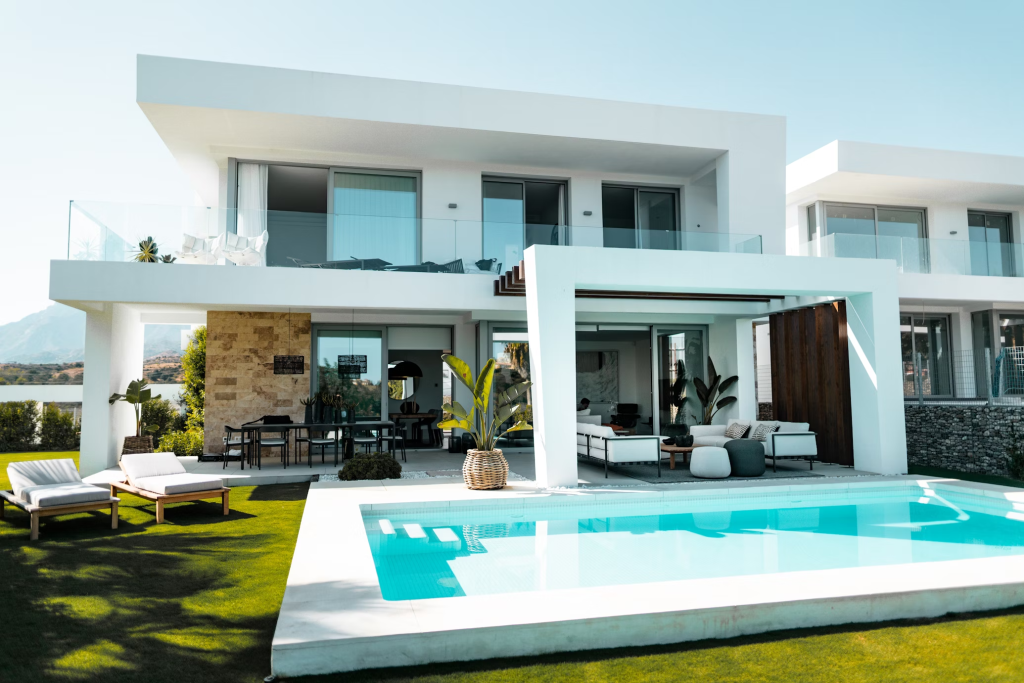When deciding between buying an existing house or building a new one in Australia, there are several factors to consider. Buying an existing property can offer immediate occupancy and a more predictable cost, with less time spent waiting. However, renovations may be required to meet your specific needs or style preferences.

On the other hand, building a new home allows you to customise the design, layout, and features to suit your exact specifications, often including modern materials and energy-efficient solutions.
However, this process can be time-consuming, costly, and subject to delays or unforeseen expenses.
Ultimately, the decision depends on your budget, desired location, and the time you’re willing to invest in the process. Each option has its own benefits and challenges, so carefully weigh your priorities before making a choice.
Click Build Vs Buy House For More Details
The Appeal Of Buying A House
Buying an existing house is a popular choice for many Australians. It offers several benefits that make it an attractive option for first-time buyers, as well as those looking to downsize or relocate to a new area. Let’s look at the pros of buying a home first.
Immediate Availability
One of the most appealing aspects of buying an existing house is that it’s ready to move into immediately. Once the purchase process is complete and you’ve settled the financials, you can start living in your new home straight away.
This is particularly convenient for people who need to relocate quickly or don’t want to wait for the lengthy construction process associated with building a house.
In contrast, building a house typically involves a waiting period that can range from several months to over a year, depending on the complexity of the build and the availability of materials.
This waiting period can be a significant drawback for those who need a place to live sooner rather than later.
Established Location
When you buy an existing house, you’re typically choosing from a range of properties in well-established suburbs or communities.
This gives you the opportunity to get a feel for the area, its amenities, and the overall vibe before committing. You can consider factors like proximity to schools, public transport, shops, and recreational areas.
Building a house, on the other hand, often involves purchasing land in newer developments, which may not have the same level of infrastructure or local amenities.
As these areas grow and develop over time, there may be ongoing construction noise or disruptions that could impact your living experience.
Potential For Immediate Equity
Another advantage of buying an existing house is the potential for immediate equity. Depending on the market conditions, you may find a property that is priced lower than the current market value, allowing you to build equity from day one.
You could also purchase a property in an area with potential for growth, increasing your property’s value over time.
Building a new house, on the other hand, may not offer the same opportunity for instant equity. While a newly constructed home may be a desirable option, it could also come with a premium price tag, especially if you’re building in a prime location.
Less Stress And Uncertainty
Buying an existing house often feels like a more straightforward process compared to building a new one. You can physically inspect the property, ensuring that it meets your needs and expectations.
You don’t have to worry about things like construction delays, cost overruns, or design changes that could arise during the building process.
While there may still be some risks associated with buying an existing property (such as hidden structural issues or maintenance concerns), they tend to be more manageable and predictable than the uncertainties of building a new home from scratch.
The Drawbacks Of Buying A House
While buying a house offers many advantages, there are some drawbacks to consider. Let’s take a closer look at the potential downsides.
Limited Customisation
One of the main disadvantages of buying an existing house is the lack of flexibility when it comes to design and layout. Even if the property meets most of your needs, it may not be exactly what you envision in terms of aesthetics, functionality, or modern features.
Renovating or making major changes to an existing home can be costly and time-consuming, and there’s no guarantee that you’ll be able to create your perfect living space without significant disruption.
Higher Maintenance Costs
Older properties, in particular, may come with hidden maintenance issues or the need for repairs. You might find that systems such as plumbing, wiring, or the roof need significant attention soon after you move in, which could lead to unexpected expenses.
The costs of maintaining an older house over time can add up, particularly if the property wasn’t well maintained by the previous owner.
Limited Energy Efficiency
Many older homes in Australia may not be as energy-efficient as new builds. They may lack modern insulation, double-glazed windows, or other eco-friendly features that can help reduce your utility bills and your environmental impact.
Retrofitting an older home with energy-efficient upgrades can be expensive and might not be as effective as starting with a more energy-efficient design from the outset.
The Appeal Of Building A House
On the other hand, building a house can provide the opportunity to create a home that perfectly suits your needs, tastes, and lifestyle. While there are more steps involved, it’s often an appealing choice for those who want something tailored to their specific vision.
Complete Customisation
One of the greatest advantages of building a new home is the ability to design it exactly how you want it. From the layout to the finishes, you have the freedom to choose every aspect of the home, ensuring it meets your needs both functionally and aesthetically.
Whether it’s an open-plan kitchen, a spacious master bedroom, or sustainable energy features, the building gives you the power to create your ideal living space.
Furthermore, you can incorporate the latest technology and materials, ensuring that your home is modern, efficient, and comfortable.
Lower Maintenance Costs
Since a newly built house uses the latest materials, appliances, and systems, it typically requires far less maintenance than an older property.
New homes often come with warranties on structural elements and appliances, which can provide peace of mind and reduce repair costs during the early years of ownership.
Additionally, new builds are more likely to meet contemporary standards for energy efficiency, which can reduce the need for repairs and maintenance related to heating, cooling, and insulation over time.
Modern Features And Energy Efficiency
Building a home offers the opportunity to include cutting-edge features that make your home more energy-efficient, sustainable, and comfortable.
This could include solar panels, rainwater harvesting systems, advanced insulation techniques, and energy-efficient heating and cooling systems. These features not only reduce your carbon footprint but can also result in significant savings on utility bills.
Long-Term Investment Potential
Building a house in a desirable area may offer long-term investment potential. By selecting a location with strong growth prospects, you can benefit from capital gains as the area develops and improves.
Additionally, because you’ve built the house to your own specifications, it may be easier to sell in the future if the market demands homes with those features.
The Drawbacks Of Building A House
While building a home offers many advantages, it’s important to also consider the challenges associated with this option.
Higher Initial Costs
Building a house tends to involve higher upfront costs compared to buying an existing property. Not only do you need to purchase the land, but you also have to pay for architectural design, construction, permits, and other fees. The process can also involve unexpected costs due to design changes or unforeseen construction issues.
It’s also important to account for the potential for cost overruns. Prices for materials and labour can fluctuate, and delays in construction can push the timeline back, which can increase overall costs. As a result, building a home can end up being significantly more expensive than originally anticipated.
Longer Timeframe
The construction process can be time-consuming. Depending on the complexity of the design, the availability of builders, and local planning regulations, it could take several months or even over a year to complete the build.
For people who need to move into a home quickly, this is a major downside, as it requires patience and flexibility. Additionally, if any issues arise during the build, such as delays in supplies or adverse weather conditions, this can further extend the timeframe.
Stress And Uncertainty
Building a home can be a stressful process, especially if you’re managing the project yourself or dealing with unexpected challenges.
From choosing the right builder to overseeing the construction process, there are many decisions to make along the way. Even if you hire a project manager, the uncertainty about potential issues, costs, and delays can be overwhelming.
Potential For Design Issues
Even though you have the freedom to design your dream home, there is always the possibility that your vision may not align with the final product.
Design miscommunications, poor construction practices, or unforeseen issues may result in a finished product that doesn’t meet your expectations. In these cases, rectifying the problem may involve additional costs and delays.
Conclusion
Whether you choose to buy an existing home or build a new one ultimately depends on your personal preferences, financial situation, and long-term plans. Buying an existing home can offer the benefit of immediate availability, an established location, and lower upfront costs.
However, it may lack the flexibility of customisation and could require ongoing maintenance.Building a home, on the other hand, gives you the opportunity to create a space that’s entirely suited to your needs and preferences, but it also comes with higher initial costs, a longer waiting period, and potential stress.
It’s important to weigh these factors carefully and consider your lifestyle, budget, and timeframes before making your decision. Regardless of your choice, both buying and building a home offers significant opportunities to create the ideal living space for you and your family.
Frequently Ask Question
Is It More Expensive To Build A House Or Buy An Existing One?
In Australia, building a house can often be more expensive than buying, especially when considering land costs, construction fees, and potential unforeseen expenses. The total cost of a building depends on the complexity of the design, location, and quality of materials.
On the other hand, buying a house may seem more affordable upfront, but it could come with hidden maintenance costs or the need for renovations. Generally, the final cost will depend on the market conditions in your area.
How Long Does It Take To Build A House Compared To Buying One?
Building a house can take anywhere from several months to over a year, depending on the complexity of the design, the size of the home, and weather conditions. In contrast, buying a house can take a few weeks to a few months, depending on the negotiation process, loan approval, and settlement period.
If you’re looking to move in quickly, buying is usually the faster option, while building requires patience for the construction process.
What Are The Risks Of Building A House?
Building a house comes with several risks, including construction delays, budget overruns, and unexpected issues like poor weather or supply shortages.
If you choose an inexperienced builder or fail to plan adequately, you could face issues that affect the overall quality and timeline of the project. It’s important to do thorough research on contractors, secure appropriate insurance, and factor in contingency funds for unexpected costs.
